Inbound Routing Users
Explore how you can use an Inbound Routing User to handle time-of-day routing for your organization's phone calls.
Table of Contents
What is an Inbound Routing User?
In your Account, you may notice a special type of user named “Inbound Routing User”. A Routing User is an empty extension that acts as a virtual switchboard operator. An Inbound Routing User will send phone calls to certain destinations depending on the time of day.

Organizations will commonly have an inbound routing user that routes calls differently for their business hours, after hours, and holidays. Many offices and businesses will have separate inbound routing users designated for their different sites/locations.
Implement an Inbound Routing User
If you have an inbound routing user already created, you have the ability to route a phone number to that routing user and ensure that its answering rules are properly set up.
Quick Tip: If you do not have an inbound routing user or would like more inbound routing users created, please contact our technical support team.
To learn more about the process for adding users and the information you may need, check out this guide.
Assign a Phone Number to a Routing User
In order for an inbound routing user to be able to route calls according to the time of day, the inbound routing user will need to be set as the destination of a phone number.
To have an inbound routing user take control of phone calls coming in from a phone number…
- Navigate to the Inventory page.

- Click the Edit
 icon next to a phone number.
icon next to a phone number.✔ Doing so will pull up the Edit menu.
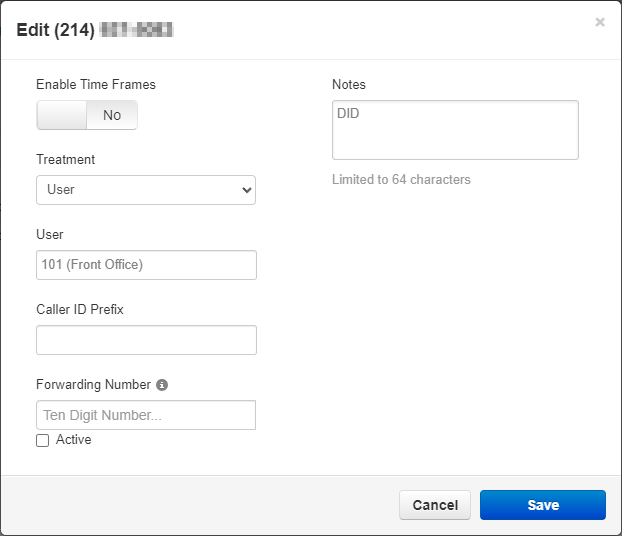
- Use the Treatment drop-down to select User.

- In the User box, type the name or extension number of the Inbound Routing User to route calls to.

- If needed, use the Notes box to add a brief description of the phone number's purpose.
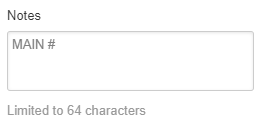
- Once you are done, click the Save button.

Check Your Answering Rules
By default, any created inbound routing users should already have answering rules created. Answering rules are usually created ahead of time to match the preferences for call routing that were mentioned during your install.
To check what answering rules your inbound routing user is referencing…
- To check where this inbound routing user is routing calls, navigate to the Users page.

- Use the search bar to search the name or extension number of the inbound routing user.

- Click the Edit
 icon and select Answering Rules.
icon and select Answering Rules.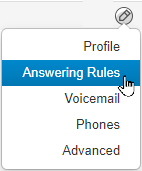
- Confirm that the Answering Rules will be routing calls to the correct destination depending on the Time Frame in use.

- If needed, click the Edit
 icon next to a rule to modify its destination.
icon next to a rule to modify its destination.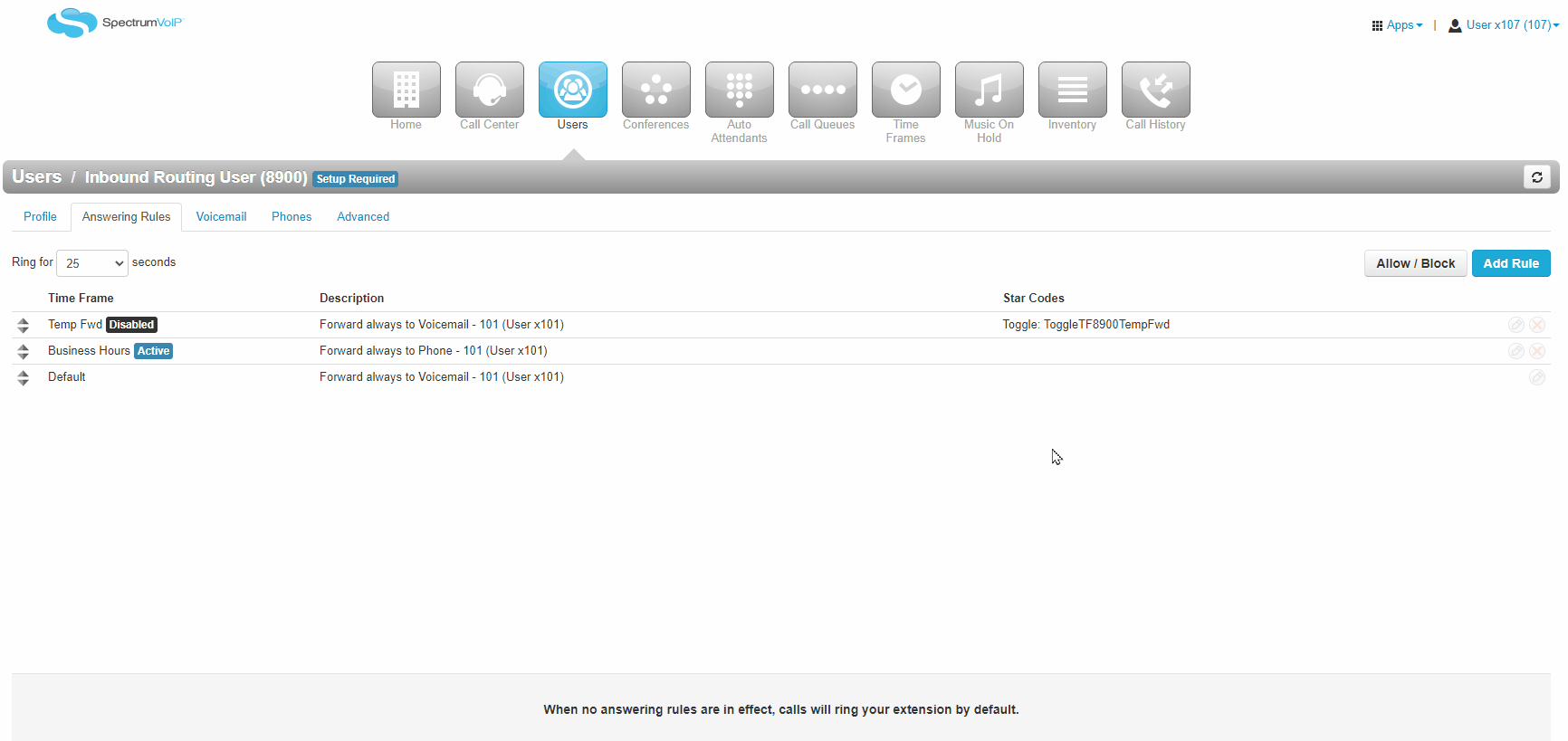
Configure New Answering Rules
If needed, you can create new answering rules for routing calls using the Stratus web portal. To do this, a time frame will need to be created so that a new answering rule can be made that will be able to tell when it should be active.
Create a Time Frame
Before we can add a new answering rule to the Inbound Routing User's answering rules, we need to create a time frame for the answering rule to reference. The time frame will tell the answering rule what time and date it should be active.
To create a time frame…
- Navigate to the Time Frames page.

- Click on the name of your business (Domain Name) to pull up a list of the time frames for the whole business.

Quick Tip: Alternatively, you can search for and click on the name of a User that needs this routing just for themself.
- Click the Add Time Frame button to create a new time frame.

- In the Add a Timeframe menu, fill in the following information:
-
Name - Type in a unique name for this time frame, such as Holidays, Temporary Forward, Meeting, Lunch, etc.

-
When - Select how the time frame should determine when to be active.
-
Always - This option will set the time frame to be active until its deactivated.

- Rules that use Always time frames can be Enabled or Disabled manually in the Answering Rules of the users that use that rule.
-
Days of the week and times - This option will set routing on a weekly schedule.
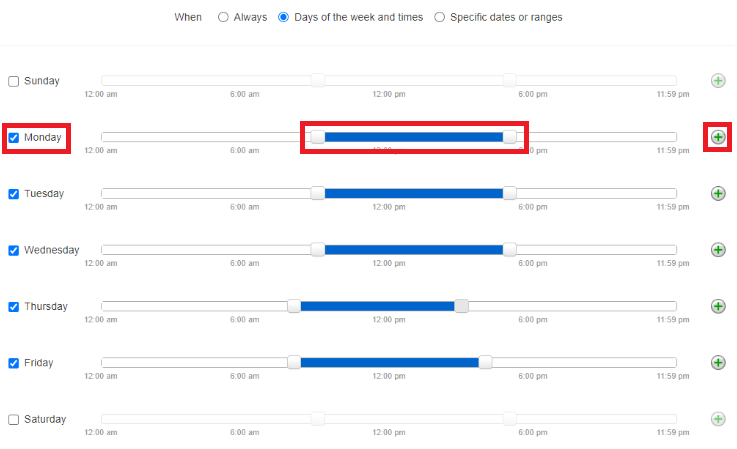
- Use the checkboxes to enable specific days of the week.
- Use the sliders to adjust start and end times.
- Click the Add Range
 button to add a split in the middle of the day.
button to add a split in the middle of the day.
-
Specific dates or ranges - Click the boxes or Calendar icons to select the starting date and time and the ending date and time that the time frame will be active.
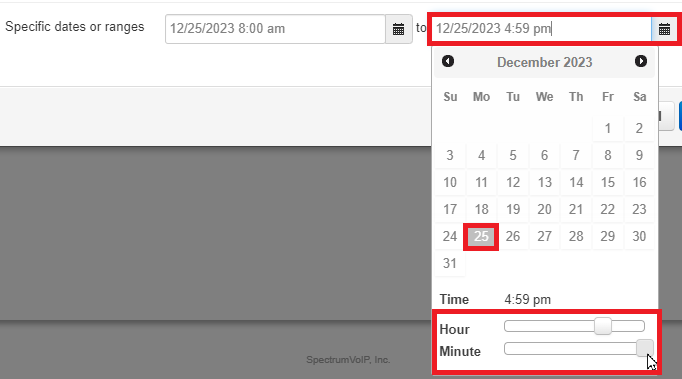
- Click a date on the calendar to select that day as part of the time the time frame will be active.
- Use the sliders to select the time for the starting and ending day of the range.
- To schedule more dates, click the Add date range
 button.
button. - To remove a date range, click the Delete
 button.
button. - After saving the time frame, you may see that your date ranges appear differently. The system will split date ranges into partial and full days, but the ranges will be the same as what you set them.
-
Always - This option will set the time frame to be active until its deactivated.
-
Name - Type in a unique name for this time frame, such as Holidays, Temporary Forward, Meeting, Lunch, etc.
- Click the Save button.

Add an Answering Rule
Now that we have a time frame and know where calls for your phone number are being routed, we can add in an Answering Rule that will route calls according to the time of day.
To create an answering rule for the Inbound Routing User…
- Navigate to the Users page.

- Use the search bar to type and select the name or extension number of the inbound routing user.

- Click the name of the routing user and visit the Answering Rules tab.
Quick Tip: Alternatively, click the Edit icon and select Answering Rules.
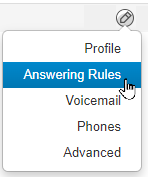
- Click the Add Rule button.

- In the Add Rule window, use the Time Frame drop-down to select the new/updated Time Frame.
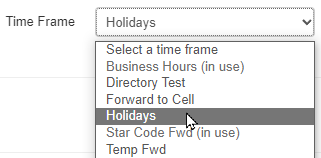
- If the rule should be active when the time frame is active, ensure the Enabled checkbox is selected.

- In the Call Forwarding section, select the Always checkbox and in the box, type the destination for calls during this time frame.
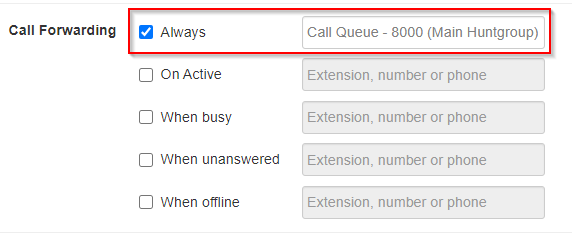
Quick Tip: Possible destinations include:
– Call Queues
– Auto Attendants
– Conference Bridges
– The Phone or Voicemailbox of a Specific User
– General Voicemailboxes
– An Off-Net 10-Digit Phone Number (Answering Service, Cellphone, etc.) - Click the Save button.

✔ You will then see the new rule for your new time frame listed.

- Make sure that the Answering Rules are prioritized correctly.
- You can move Time Frames around by clicking and dragging the triangles on the left-hand side of the answering rules.

- The rules take priority from top-to-bottom.
- Top = Highest Priority (Usually a Temp Forward or Holiday answering rule)
- Bottom = Lowest Priority (Default/After Hours answering rule)
- You can move Time Frames around by clicking and dragging the triangles on the left-hand side of the answering rules.
- Place a test call to your business to ensure your calls are routing properly.